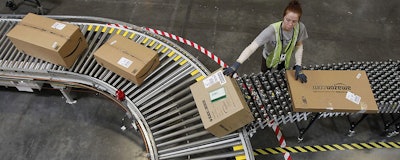
 Earl van As
Earl van AsDistributors and manufacturers alike have been looking over their shoulder for some time with the ubiquity of e-marketplaces like Amazon and Alibaba as a product marketplace. Instead of considering these digital marketplaces as competition, manufacturers and distributors should be viewing them as an additional sales channel. One they don’t need to market or create awareness around, and one that delivers a built-in customer base.
The beauty of e-marketplaces is that both distributors that have an existing e-commerce site and those that don’t can take advantage — without having to commit extensive resources to developing or maintaining an e-commerce presence. It’s just another sales touchpoint. For example, Amazon launched Amazon Business, aiming to replicate the success Alibaba has been enjoying allowing thousands of small business customers access to wholesale stock.
E-Marketplaces allow distributors to get rid of excess stock with little impact to their existing customers or business profile. On Amazon, the customer can see who the supplier is who is selling the product, but most suppliers aren’t represented as themselves.
Many distributors and manufacturers that have gone this route are enjoying a new revenue source. Customers however, expect the same fast service that propelled these e-marketplace vendors into success initially. Subsequently, companies using e-marketplaces must figure out how to process these orders on their end.
The typical workflow is that a customer places an order and the distributor or manufacturer gets an email from the e-marketplace and requires an inbound sales rep to login, retrieve the order and then manually enter it into their own ERP system. The great news is that orders are coming in from a new source and increasing profits, however it might be more difficult to get orders into the system quickly enough. The customer expects speedy processing, tracking and delivery and the e-marketplace platform like Amazon demands this of vendors as well.
Companies playing in this space can take advantage of Conexiom. The email from the e-marketplace business profile comes in, and Conexiom takes care of the processing by retrieving the order and delivering it into the company’s ERP system within minutes. The e-marketplace revenue stream becomes automated and staff isn’t burdened with managing the sales touchpoint.
If distributors want to play in this new way of getting rid of excess inventory, doing it on Amazon or another e-retailer is the way. Incidentally, the manufacturers and distributors who have tapped this revenue stream first are the biggest players in the industry.
Earl van As is Vice President, Marketing & Product Management at ecmarket, cloud solutions developer of the patent-pending Conexiom sales order and invoice automation solution. Conexiom allows manufacturers and distributors to focus on serving customers and managing supplier relationships instead of entering data. For more information, visit www.conexiom.com.





















